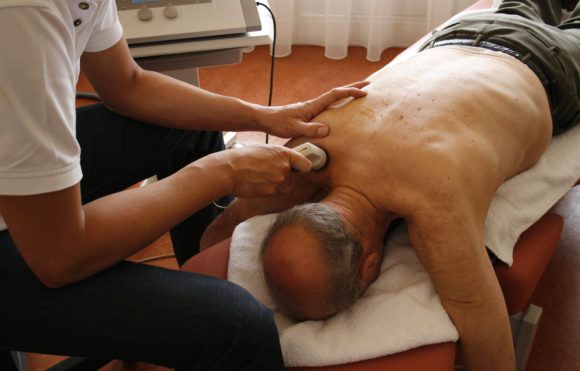Workers’ compensation rates decreased statewide in Louisiana on May 1 by 9.8 percent, marking the fourth year in a row rates have dropped in that state, according to insurance regulators.
In January, the Louisiana Department of Insurance reported the insurance commissioner had approved the rate decrease filed by the National Council on Compensation Insurance (NCCI).
Insurance Commissioner Jim Donelon said in LDI’S announcement that workers’ comp rates in the state dropped by 34 percent over the last decade and by 50 percent over the last 20 years. He attributed the decreases to “robust competition” and lower claims frequency.
He said incidences of nonfatal injuries and illnesses on the job in Louisiana decreased to about 26,000 incidents in 2015 for workers in private industry, compared with around 40,000 such incidents in 2005.
Workers’ comp rates decreased last year by 2.7 percent, with a rate drop that took effect May 1, 2016.
The Louisiana workers’ compensation market is estimated to be more than $950 million in total premium, according to LDI.
Despite the gains in competition and drop in claims frequency, a recent study by the Massachusetts-based Workers’ Compensation Research Institute (WCRI) indicates that Louisiana still has room for improvement.
For instance, WCRI said that in Louisiana, total costs per claim with more than seven days of lost time were higher compared with 17 other states in WCRI’s CompScope Benchmarks, 17th Edition.
That study showed that the average cost per claim has been growing faster in Louisiana than in the study typical state since 2010. Growth in Louisiana 2010 – 2015 averaged 4.5 percent per year compared with 2.6 percent in the median of 18 study states for 12 months of experience, the WCRI found.
The WCRI also reported that indemnity benefits per claim in Louisiana were 39 percent higher than the 18-state median.
The 18 states in the study are Arkansas, California, Florida, Georgia, Illinois, Indiana, Iowa, Kentucky, Louisiana, Massachusetts, Michigan, Minnesota, New Jersey, North Carolina, Pennsylvania, Texas, Virginia, and Wisconsin.
By comparison, in the neighboring state of Texas, total costs per claim are among the lowest of the study states. Prior to 2001, Texas had the highest costs per claim. WCRI attributed workers’ compensation reform legislation that was passed in 2001 and the following years to the improvement in Texas workers’ comp results.
Indemnity benefits per claim in Texas were also found to be among the lowest of 18 study states — 37 percent lower than the typical state.
Other findings from WCRI’s report:
• Duration of temporary disability benefits in Louisiana was eight to 16 weeks longer than other states
• Medical payments per claim have been driven largely by higher and rising hospital outpatient payments
• Like the typical study state, Louisiana saw double digit growth in wages from 2010 through 2015. Wages of injured workers increased in all industry groups; wage growth in manufacturing was 21 percent
• Use of defense attorneys is on the rise in Louisiana and the rate is higher than in most of the study states
• Since 2012 average growth of medical payments per claim was 3 to 5 percent, compared with a 6 percent growth in average payment per claim from 2004 to 2011.
The Opioid Problem
Like many other states, Louisiana has an opioid problem, which Insurance Commissioner Donelon acknowledged in his March 2017 Commissioner’s Column.
“Over the past several years Louisiana has become part of a growing and alarming problem in our country: the increase of opiate substance use disorders,” Donelon wrote. He said that according to the Centers for Disease Control and Prevention, “the problem is especially acute in Louisiana which has an overdose death rate exceeding the national average.”
The WCRI reported in a study of 25 states released in 2016 — Interstate Variations in Use of Opioids, 3rd Edition — that among workers’ comp claims that included opioids, Louisiana was one of the states with the highest average amounts of opioids received by injured workers.
The WCRI also found that around 85 percent of injured workers receiving pain medications received opioids, and that one in six injured workers in Louisiana that received opioids received them on a long-term basis.
Topics Trends Texas Louisiana Workers' Compensation Pricing Trends
Was this article valuable?
Here are more articles you may enjoy.



 Howden US Tells Judge Brown & Brown Employees Fled Due to ‘Mistreatment’
Howden US Tells Judge Brown & Brown Employees Fled Due to ‘Mistreatment’  Is the AI Boom a Bubble Waiting to Pop? Here’s What History Says
Is the AI Boom a Bubble Waiting to Pop? Here’s What History Says  MAPFRE Accuses AAA of Violating Long-Time Exclusive Marketing Agreement
MAPFRE Accuses AAA of Violating Long-Time Exclusive Marketing Agreement  FBI Involved After Two Florida Injury Lawyers Go Missing From Fishing Trip
FBI Involved After Two Florida Injury Lawyers Go Missing From Fishing Trip 


